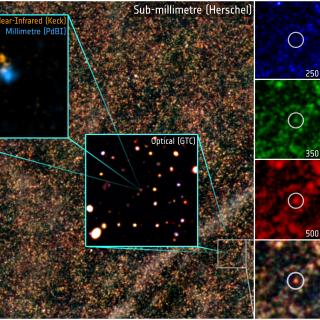Bibcode
Phillips, M. M.; Pan, Y. -C.; Pellegrino, C.; Padilla Gonzalez, E.; Newsome, M.; Morrell, N.; Moran, S.; Morales-Garoffolo, A.; Misra, K.; McCully, C.; Mazzali, P. A.; Lundqvist, P.; Matilainen, K.; Lundquist, M. J.; Kumar, S.; Li, Z. -T.; Kravtsov, T.; Kouprianov, V.; Kotak, R.; Kilpatrick, C. D.; Kankare, E.; Karamehmetoglu, E.; Hung, T.; Jha, S. W.; Hsiao, E. Y.; Howell, D. A.; Holmbo, S.; Haislip, J.; Hiramatsu, D.; Gutiérrez, C. P.; Geier, S.; Gangopadhyay, A.; Galbany, L.; Fugazza, D.; Foley, R. J.; Fiore, A.; Dimitriadis, G.; Davis, K. W.; Dastidar, R.; Cappellaro, E.; Coulter, D. A.; Cai, Y. -Z.; Burke, J.; Brink, T. G.; Bostroem, K. A.; Ashall, C.; Andrews, J. E.; Valenti, S.; Reynolds, T. M.; Tartaglia, L.; Rojas-Bravo, C.; Filippenko, A. V.; Elias-Rosa, N.; Reguitti, A.; Fraser, M.; Valerin, G.; Pastorello, A.; Pignata, G.; Piro, A. L.; Reichart, D. E.; Rest, A.; Salmaso, I.; Sand, D. J.; Siebert, M. R.; Smartt, S. J.; Smith, K. W.; Srivastav, S.; Stritzinger, M. D.; Taggart, K.; Tinyanont, S.; Yan, S. -Y.; Wang, L.; Wang, X. -F.; Williams, S. C.; Wyatt, S.; Zhang, T. -M.; de Boer, T.; Chambers, K.; Gao, H.; Magnier, E.
Referencia bibliográfica
Astronomy and Astrophysics
Fecha de publicación:
3
2023
Revista
Número de citas
18
Número de citas referidas
14
Descripción
We present photometric and spectroscopic data on three extragalactic luminous red novae (LRNe): AT 2018bwo, AT 2021afy, and AT 2021blu. AT 2018bwo was discovered in NGC 45 (at about 6.8 Mpc) a few weeks after the outburst onset. During the monitoring period, the transient reached a peak luminosity of 1040 erg s−1. AT 2021afy, hosted by UGC 10043 (∼49.2 Mpc), showed a double-peaked light curve, with the two peaks reaching a similar luminosity of 2.1(±0.6)×1041 erg s−1. Finally, for AT 2021blu in UGC 5829 (∼8.6 Mpc), the pre-outburst phase was well-monitored by several photometric surveys, and the object showed a slow luminosity rise before the outburst. The light curve of AT 2021blu was sampled with an unprecedented cadence until the object disappeared behind the Sun, and it was then recovered at late phases. The light curve of LRN AT 2021blu shows a double peak, with a prominent early maximum reaching a luminosity of 6.5 × 1040 erg s−1, which is half of that of AT 2021afy. The spectra of AT 2021afy and AT 2021blu display the expected evolution for LRNe: a blue continuum dominated by prominent Balmer lines in emission during the first peak, and a redder continuum consistent with that of a K-type star with narrow absorption metal lines during the second, broad maximum. The spectra of AT 2018bwo are markedly different, with a very red continuum dominated by broad molecular features in absorption. As these spectra closely resemble those of LRNe after the second peak, AT 2018bwo was probably discovered at the very late evolutionary stages. This would explain its fast evolution and the spectral properties compatible with that of an M-type star. From the analysis of deep frames of the LRN sites years before the outburst, and considerations of the light curves, the quiescent progenitor systems of the three LRNe were likely massive, with primaries ranging from about 13 M⊙ for AT 2018bwo, to 14−1+4 M⊙ for AT 2021blu, and over 40 M⊙ for AT 2021afy.
Tables A1-A3 are only available at the CDS via anonymous ftp to cdsarc.cds.unistra.fr (ftp://130.79.128.5) or via https://cdsarc.cds.unistra.fr/viz-bin/cat/J/A+A/671/A158
Proyectos relacionados

Formación y Evolución de Galaxias: Observaciones Infrarrojas y en otras Longitudes de Onda
Este grupo desarrolla varios proyectos extragalácticos en diferentes rangos del espectro electromagnético utilizando satélites y telescopios en tierra para estudiar la evolución cosmológica de las galaxias y el origen de la actividad nuclear en galaxias activas. En el aspecto instrumental, el grupo forma parte del consorcio internacional que ha
Ismael
Pérez Fournon